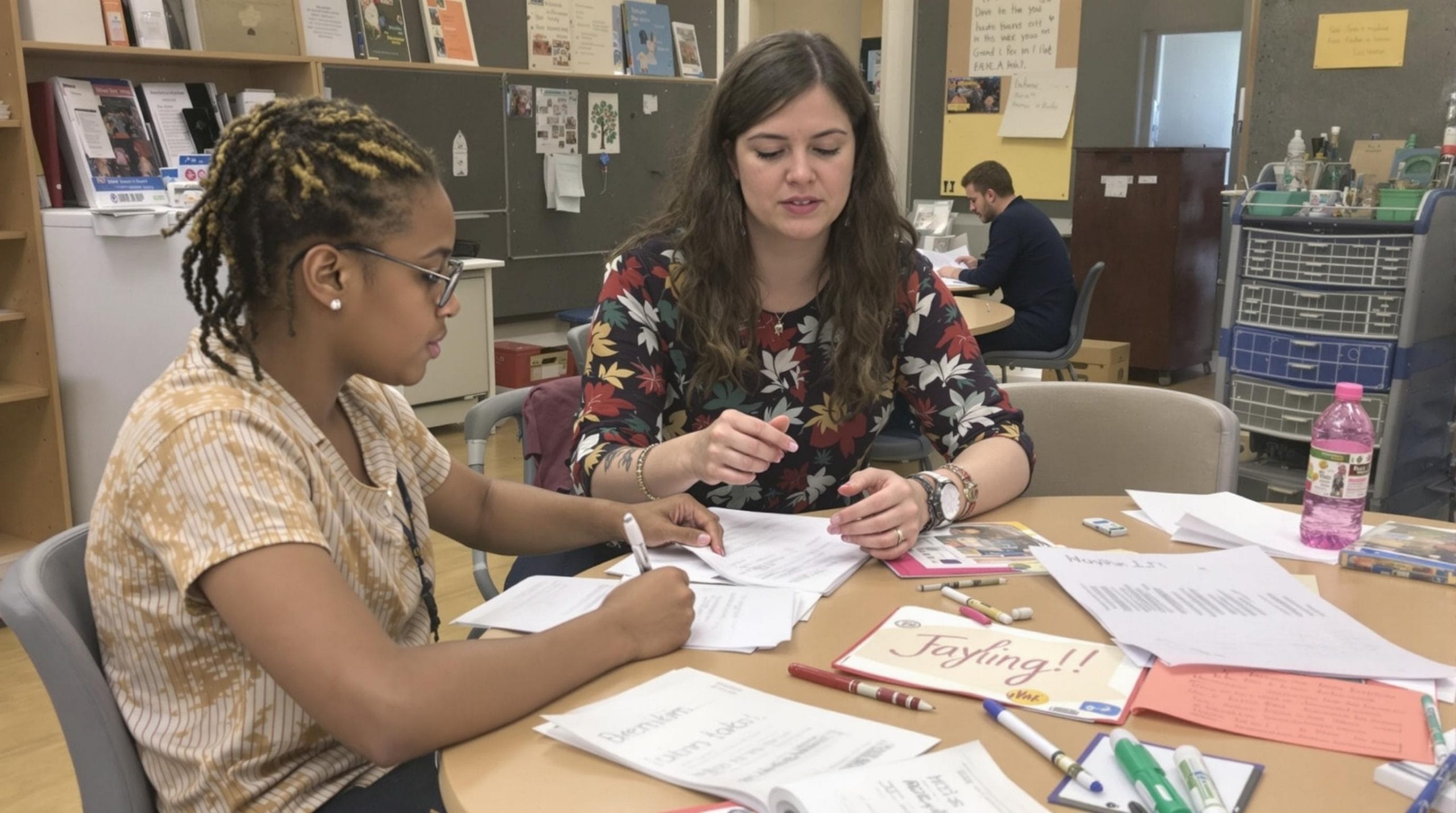Unlock Digital Skills: Literacy Simply Explained Now
Digital literacy has become the foundation for success in today’s interconnected world, with **5.64 billion people** now online and 84% of jobs requiring basic digital competencies. To Unlock Digital Skills effectively, individuals must develop the ability to confidently use technology for accessing, evaluating, creating, and communicating information across multiple platforms and formats.
Key Takeaways
- Digital Literacy Explained as a combination of technical and cognitive skills needed to navigate, create, and communicate in digital spaces
- With 68.7% of the global population online, digital competence has become essential for work and daily life
- The Simple Tech Guide approach focuses on four pillars: comprehension, interdependence, social factors, and curation
- Learn Online through free resources like Coursera, edX, and Khan Academy to build Essential Skills for the modern workforce
- Despite progress, 2.57 billion people remain offline, highlighting the urgent need for digital equity initiatives
What Digital Literacy Really Means in 2025
Digital literacy represents far more than just knowing how to use a computer or smartphone. It’s the ability to confidently and critically use digital technologies to access, evaluate, create, and communicate information. This comprehensive skill set encompasses both technical abilities and cognitive skills necessary for processing digital information in multiple formats.
The American Library Association emphasizes that digital literacy enables productive engagement in digital spaces. Core competencies include researching effectively online, creating digital content, collaborating on various platforms, and adapting to technological change. As technology continues to evolve rapidly, these skills form the foundation for both personal and professional success.
Today’s digital landscape demands that individuals can navigate complex information ecosystems, distinguish credible sources from misinformation, and create meaningful digital content. Whether you’re becoming an IT professional or simply trying to stay current, understanding digital literacy is your first step toward digital empowerment.
The Global Digital Reality: 5.64 Billion People Online
Current statistics paint a remarkable picture of global connectivity. As of April 2025, 5.64 billion internet users represent 68.7% of the world’s population, according to DataReportal. This massive digital adoption has fundamentally transformed how we work, learn, and communicate.
Mobile technology drives this revolution, with 95.9% of users accessing the internet via mobile phones. Mobile traffic now accounts for 62% of all web traffic, making mobile literacy an essential component of overall digital competence. This shift has profound implications for how we design educational programs and workplace training.
However, significant disparities remain. Despite impressive growth, 2.57 billion people still lack internet access, primarily in Asia and Africa. The European Union has set ambitious targets, aiming for 70% of adults to have basic digital skills by 2025. In Canada, while 84% of jobs require basic digital skills, only 30% of the workforce feels “very prepared” for digital work challenges.
Why Digital Skills Matter More Than Ever
The World Economic Forum projects a dramatic shift in the employment landscape. By 2025, while 85 million jobs may be displaced by automation, an estimated 97 million new digital roles will emerge. This transformation makes digital literacy not just valuable but essential for career survival and growth.
Modern employers seek professionals who combine digital and soft skills. Technical proficiency must blend with communication abilities, teamwork, and problem-solving capabilities. This integration reflects how digital tools have become inseparable from everyday work processes across all industries.
Digital literacy has evolved from a nice-to-have skill to a fundamental requirement for equitable participation in society. Essential skills for future success include:
- Critical thinking for evaluating digital information
- Creativity in digital content creation
- Collaboration across digital platforms
- Communication through various digital channels
- Adaptability to emerging technologies
The Four Pillars of Digital Competence
Understanding digital literacy requires grasping its four fundamental pillars. Each pillar represents a critical aspect of digital engagement that builds toward comprehensive digital fluency.
Comprehension forms the foundation, enabling individuals to understand and interpret digital content effectively. For example, when reading news online, comprehension skills help you identify credible sources and detect potential misinformation.
Interdependence recognizes how different media forms connect and influence each other. This understanding allows you to share content seamlessly across platforms while recognizing how information transforms as it moves between different digital spaces.
Social Factors acknowledge that age, education, and income significantly impact digital engagement. These factors influence not only access to technology but also the confidence and skills needed to use digital tools effectively.
Curation involves organizing and managing digital content systematically. Whether you’re organizing photos in cloud storage or managing professional documents, curation skills help maintain digital order and accessibility.
UNESCO’s Six Essential Digital Competencies
UNESCO provides an internationally recognized framework outlining six core competency areas for digital literacy. This comprehensive approach ensures individuals develop well-rounded digital capabilities suited for global participation.
The framework encompasses:
- Device and software operation skills – fundamental technical abilities
- Information and data literacy – finding, evaluating, and managing digital information
- Digital communication proficiency – engaging effectively across digital channels
- Content creation abilities – producing meaningful digital materials
- Online safety awareness – protecting personal and professional digital assets
- Digital problem-solving skills – resolving technical challenges independently
This international standard helps educators and policymakers design programs that address all aspects of digital competence. By following UNESCO’s framework, individuals can ensure they’re developing comprehensive digital skills recognized worldwide.
Breaking Down Digital Barriers
Despite technological advances, significant barriers prevent many from achieving digital literacy. Access challenges remain the most fundamental obstacle, including limited hardware availability, inadequate software resources, unreliable internet connections, and financial constraints that make technology unaffordable.
Personal barriers often prove equally challenging. Many individuals lack digital role models in their communities, face intimidation when approaching new technologies, or fear making mistakes that might damage expensive equipment. In Canada, security concerns compound these challenges, with 60% of users receiving unsolicited spam and 40% encountering fraudulent content, according to ABCLifeLiteracy.ca.
The digital divide persists stubbornly in less connected regions, particularly affecting rural communities and developing nations. Bridging this gap requires coordinated efforts between public and private sectors, investing in both infrastructure development and comprehensive digital education programs.
Your Digital Skill-Building Action Plan
Building digital literacy requires embracing lifelong learning through ongoing training and experimentation. The rapidly evolving nature of technology means that skills learned today may need updating tomorrow, making continuous education essential.
Free online resources provide excellent starting points for skill development. Platforms like Coursera, edX, and Khan Academy offer courses ranging from basic computer skills to advanced programming. These resources, combined with AI-powered personalized learning systems, can accelerate your digital literacy journey.
Community programs and digital literacy workshops offer hands-on learning opportunities with peer support. Government portals provide additional resources, including national frameworks like the EU Skills Agenda and Ghana’s eTransform program. These initiatives demonstrate global commitment to digital skill development.
Consider engaging in collaborative and creative digital activities to build confidence. Whether participating in online forums, creating digital art, or exploring STEM activities with children, practical application reinforces learning and makes technology less intimidating.
Remember that staying current as technology evolves isn’t just about keeping up—it’s about maintaining relevance in an increasingly digital world. Start with small steps, celebrate progress, and gradually expand your digital horizons. Your future self will thank you for investing in these essential skills today.
Sources
Potomac College – What is Digital Literacy?
CSIS – The Digital Literacy Imperative
InformationWeek – What Data Literacy Looks Like in 2025
University of Iowa – Digital Literacy: Preparing Students for a Tech-Savvy Future
DataReportal – Global Digital Overview
UNESCO UIS – Global Framework Reference Digital Literacy Skills
latest video
news via inbox
Nulla turp dis cursus. Integer liberos euismod pretium faucibua





